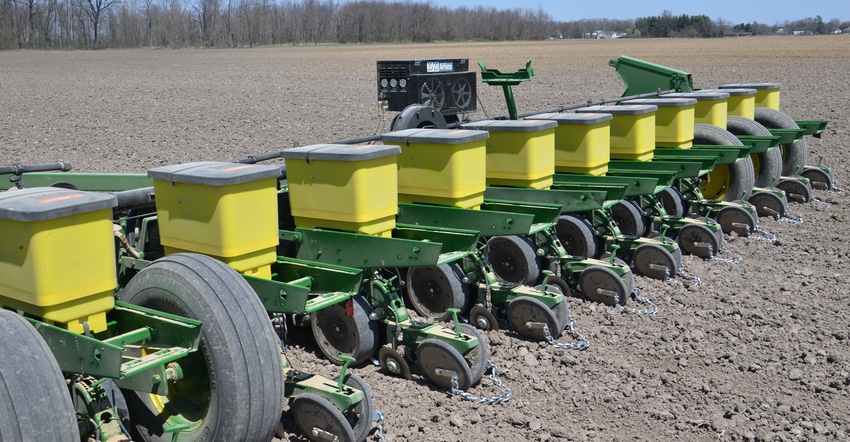
Here are indisputable facts. Corn and soybean planters are larger today compared to 25 years ago. Some farmers have invested in high-speed planting technology so they can plant at speeds of 7 or 8 miles per hour. Many have shifted from planting soybeans with a 15-foot drill to planting with a wide, split-row planter, often at the same time they’re planting corn. These facts lead to another one: An individual farmer can plant more acres per day vs. 25 years ago.
The logical conclusion is that it should be possible to plant a greater percent of all Indiana crops per week when necessary.
“As is often the case with ‘logical conclusions,’ historical data do not necessarily support the logic,” Bob Nielsen says. Nielsen, a Purdue Extension corn specialist, recently examined the maximum number of acres planted per week in Indiana from 1997 through 2021 and determined that not much has changed in terms of how many acres can be planted in a single week.
“When I looked at historical planting progress of each crop individually, the data suggests little progress in our ability to plant a lot of acres quickly,” Nielsen says. “Even when you combine corn and soybean acres to account for more people planting both crops at once, the most acres ever planted in one week, 5.25 million, was in 2001. We haven’t approached that number since then.”
What it means
The best explanation boils down to another fact: There are fewer farmers and fewer farms today.
“The number of corn and soybean growers in Indiana has decreased over time, and those remaining are farming more acres than they did 25 years ago,” Nielsen says. “So, even though equipment is larger and can cover more acres per day, fewer farmers farming more acres each means total planting progress in terms of percent of total crop acres planted per week remains fairly unchanged.”
Studies at the University of Illinois indicate there may be fewer days available for field work in any one week today compared to 25 years ago. That fits with information provided by Beth Hall, Indiana state climatologist, indicating more extremes in weather conditions today, even within one week — especially during the spring.
What to do
So, how can you accomplish more? “Perhaps it goes without saying, but as planting season approaches, make sure you have the planter in top shape and everything else ready to roll,” Nielsen says. “There won’t be any room for downtime due to breakdowns.”
Second, exercise wise judgment. “We always remind people not to plant too wet, because the risk of doing so is real,” Nielsen says. “Planting in poor conditions could lead to thin stands and/or rooting problems, which last all year and impact yields.
“However, all I can ever ask for is that you listen or read what we have to say, then factor in everything else and make your best decision. If you understand the risks of planting when it’s not ideal, then you can decide if it’s a risk you want to take.”
Which weeks are most Indiana crops planted?
Here are seven related facts that may be eye-opening:
1. The greatest number of corn acres planted in a single week in Indiana was 2.9 million in 2001. That was 50% of the total Indiana corn acreage that year.
2. The closest Indiana farmers have come to that 2001 number was in 2014, when 2.4 million acres, or 41% of the crop, was planted in one week.
3. The most soybean acres planted in one week was also in 2001. Indiana farmers planted 2.4 million acres, or 42%.
4. The second most soybean acres ever planted in a single week was 1.8 million, or 32%, in 2016.
5. The maximum week for corn planting in any one year may not be the same week when the maximum number of soybeans were planted statewide.
6. There was one year when over 5 million acres of corn and soybeans combined were planted in Indiana in one week. Yes, it was 2001. Farmers planted 5.25 million total crop acres. “Such an achievement in a week’s time borders on phenomenal,” Nielsen says.
7. In the 20 years since 2001, the record planting pace for a single week has never been threatened, Nielsen says. The maximum number of corn and soybean acres combined planted in a single week since 2001 averages 2.7 million acres.
Read Nielsen’s full report on planting progress online.
About the Author(s)
You May Also Like




